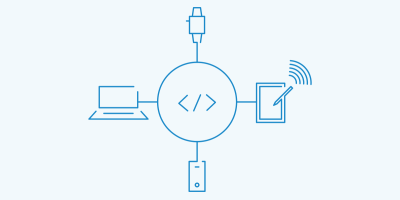
Accelerate Multichannel Digital Experiences with Composable Content

We’re living in the Experience Economy, where a customer’s experience with your brand on the channels of their choice makes or breaks your ability to compete and win them over.
As a result of this explosion of digital channels, marketers and other content authors need to create more content faster than ever before and distribute it everywhere to meet customer expectations. That content must fit the context of each interaction appropriately, whether it’s a website, a mobile app, email or other interfaces that haven’t even been thought up yet.
Yet, far too many content creators and editors stop once they’ve hit publish and fail to execute an effective content distribution strategy. This means that your case studies, thought leadership blogs or event announcements never actually reach their full audiences and have limited impact. Why? It’s very likely your organization’s digital content is locked up in system silos - scattered in hard to reach places. You know what this looks like: content created in a CMS lives in a CMS and is destined for use on one website (likely not even making its way to the other websites in your organization). The same goes for content created in a marketing automation system — content may be flowing into emails, but not to other channels where it could provide value.
An open source platform like Acquia’s Drupal content management system enables enterprises to: provides a remedy to the content silo problem. It streamlines and centralizes authoring and enables marketers to create content once, in a format separate from presentation, so you can use it easily across any channel, on any device, in any context.
Need to create content and share it across a dozen Drupal websites? How about also sharing it across digital signage and social media? With an agile CMS, marketers can author once and specify channels for delivery of that content -- in whole or in part -- anywhere. It makes real the idea of COPE: Create once, publish everywhere. Developers who help build digital experiences can access content via API and use it in progressively decoupled or headless applications. No channel or experience is off-limits.
How Composable content solves the Copy-and-Paste Conundrum
Decades ago when people still received their information from traditional newspapers rather than through computers, journalists would create that day’s edition by laying out the articles on a table and assembling the pages with scissors and glue. Surprisingly, the digital content age hasn’t advanced as far from this as you’d think.
When content is siloed in multiple systems, if the marketing team wants to use certain messaging in a website, a social campaign, a kiosk application or commerce application, someone has to copy and paste it into each system. This duplication of effort wastes precious work cycles and threatens brand consistency and content accuracy.
This is one painful legacy of years of martech growth and adoption. Organizations using a diversity of systems have effectively built walls around the content that lives in multiple systems. These content silos prevent easy reuse, sharing and syndication. In the end, it slows down the velocity of delivering great content-rich digital experiences and makes for a lot of redundant work.
You need a better, more streamlined content supply chain to feed all your channels and systems. You need to adopt a content authoring system that can create “flexible” content. The proliferation of digital experience channels isn’t slowing down, nor is the requirement for your organization to create large volumes of content that can be used across a myriad digital experiences. When it comes to creating and accessing flexible content, it’s a matter of when not if, your organization needs to gain this capability to compete and win in the Experience Economy.


